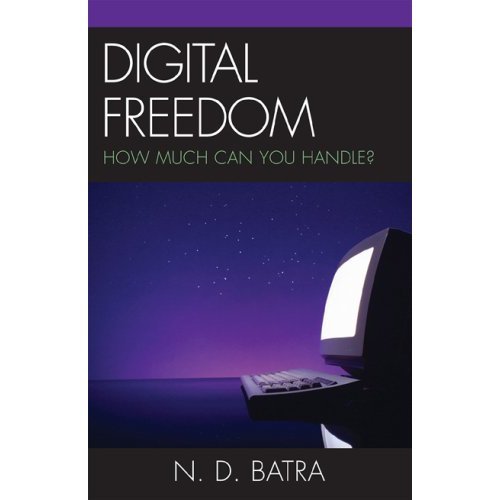INDIA
TRIES A MOONSHOT
Digital India has been called
a moonshot project that draws together the best human and private-public
capital to achieve a goal that was previously thought to be impossible: Total
transformation of society.
Digital India, based on Aadhaar, focuses on three
fundamental areas: access to digital infrastructure as a utility, services on
demand, and digital empowerment of citizens through access to information. With
more than a billion UIDs and growing, Aadhaar is the world’s largest database.
Aadhaar has captured the imagination of the
people of India. Besides the government, private enterprises, including some
places of worship, have begun to use Aadhaar to prevent fraud and facilitate
transactions. For example, a Hindu temple in Almora, Uttarkhand, makes Aadhaar
cards mandatory for getting married. Temple priest Hari Vinod Pant told The
Times of India, “There have been instances when couples who came to the temple
were found to be underage and it turned out they had eloped to get married.
There have also been cases of Nepalese underage girls coming here to get
married. So the temple committee took the decision of checking Aadhaar cards
before agreeing to conduct the wedding.”
Indian Railways, one of the world’s largest
railroad networks, a transport system that carries more than 22 million
passengers a day, is planning to link subsidized concessional tickets for
senior citizens and the underprivileged with Aadhaar to prevent fraud. But
Digital India means much more: all railway structures and operations must be
totally digitized and automated to eliminate deadly train derailments, such as
the one that happened to Indore-Patna Express that killed scores of passengers.
In a major reshaping of the public health system,
Aadhaar numbers will be used as unique patient identifiers in a new electronic health
records system. National identification numbers will be generated and assigned
to all health facilities, beginning with public health facilities.
To encourage the use of Aadhaar, the Reserve Bank
of India has asked banks to ensure that all new transactional cards, effective
from Jan. 1, 2017, are also enabled to process payment using Aadhaar-based
biometric authentication.
Under the financial inclusion scheme, Jan Dhan,
any Indian older than 10 years who does not have a bank account can now open
one in their name with an opening deposit of zero in any registered bank.
Demonetization has awakened the mostly dormant Jan Dhan. Bill Gates of
Microsoft is not the only foreign observer who believes that India will “move
away from a shadow economy to an even more transparent economy.” The whole
world is watching.
There have been concerns about the misuse of
biometric data. Aadhaar uses the highest available public key cryptography with
built-in tools to prevent meddling. Just like the U.S. military, Aadhaar uses
layers of firewalls for data protection. Besides, Aadhaar databases are
segregated. Segregation adds to security.
Entrepreneurs regard India’s digital venture as
an extremely bold initiative. Jack Hidary, a senior adviser at Google X Labs,
speaking at EmTech 2016: The Digital Future, called India as a moonshot nation
that is “going through a radical transformation the like of that we have never
seen.” A moonshot, he said, is an initiative that aims to achieve a goal that
was previously thought to be impossible because it attracts the best human
capital and finance from long-term investors.
Sharad Sharma, co-founder of iSpirit, said at the
conference, “India is entering a phase of innovation that is substantially
different from what we have seen until now.” Aadhaar, he stated, will create
other digital possibilities such as “the presence-less layer, which means I can
open a bank account and establish who I am without doing in-person
verification.” Aadhaar will enable millions of people to use their e-signs for
paperless transactions. Aadhaar has made possible the Unified Payments
Interface (UPI), a debit card system that is a less expensive alternative to
MasterCard and Visa.
With 650 million smartphone users, it is expected
that within a year, mobile cash will become all pervasive in India, especially
when the “digital consent” becomes an operational and integral part of the
cashless payment system. As reported in LiveMint, Mr. Sharma said, “We are data
poor right now, but we are putting in place a new system to managing digital
consent, so nobody can aggregate data about you without a digital permission
token from you. This is going to be the largest country-scale system in the
world — a techno-legal solution… a very modern approach, which is a techno-legal
sort of solution to manage privacy.”
While the government uses Aadhaar to ensure the
delivery of benefits and services to residents, albeit with a special focus on
the underprivileged, business enterprises are developing Aadhaar-based apps for
the nation’s burgeoning e-commerce. That is drawing Amazon, Google, Microsoft,
Facebook and others to collaborate and compete with Indian enterprises to reach
rural India. Consider this: in 2014 Jeff Bezos of Amazon invested $2 billion,
and in June 2016 he pledged another $3 billion, to build a logistics network to
cover the entire country to have a major stake in the online market expected to
grow to $110 billion in the coming decade, according a Wall Street Journal
report.
Google and Tata Trusts have trained thousands of
female trainers and sent them to rural India on motorbikes to help rural women
to learn the use of smartphones and tablets for building their small home-based
businesses.
Women in India lag far behind men on social
media, e-commerce and mobile connectivity. Parents discourage girls from having
smartphones. They fear that young girls might go astray or do something that
might shame the family. For their own self-interest, it is important for IT
companies, therefore, to educate people and remove their fear of smartphones,
especially by women so that they can fully participate in opportunities created
by Digital India. Once men see that women are using smartphones for socially
useful purposes, their hostility will diminish. That is the hope for Digital India:
Give every woman a smartphone and see India transform.

No comments:
Post a Comment